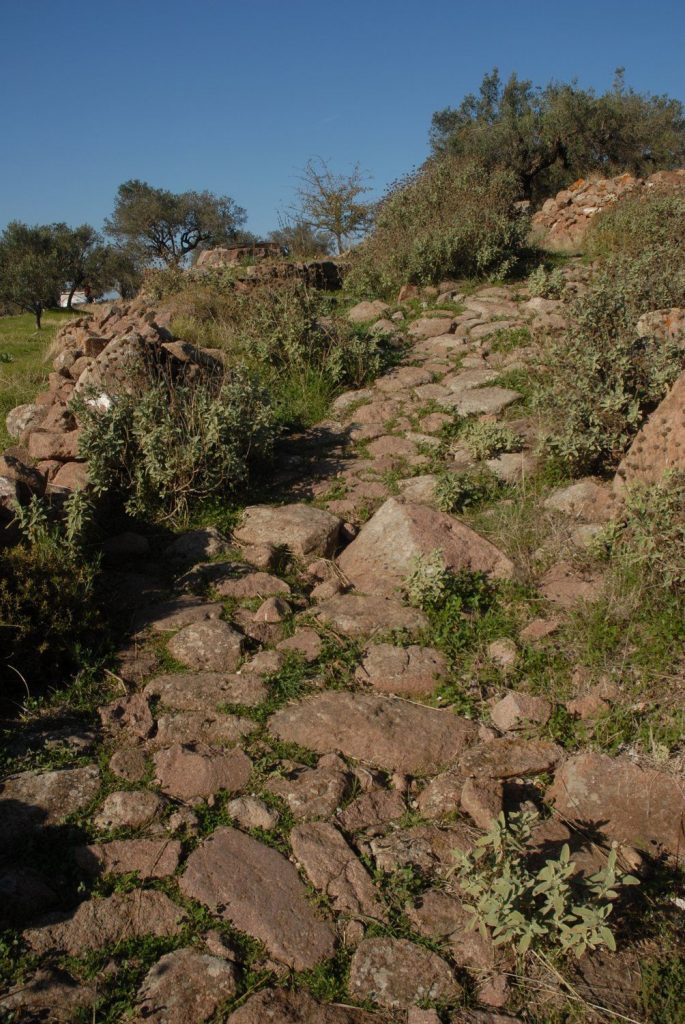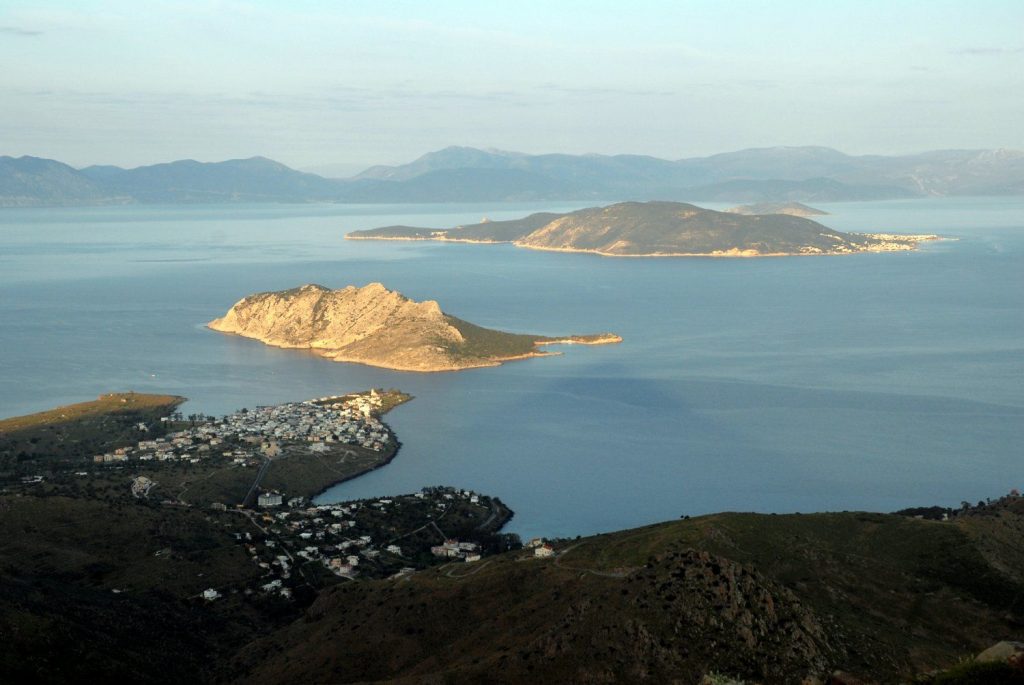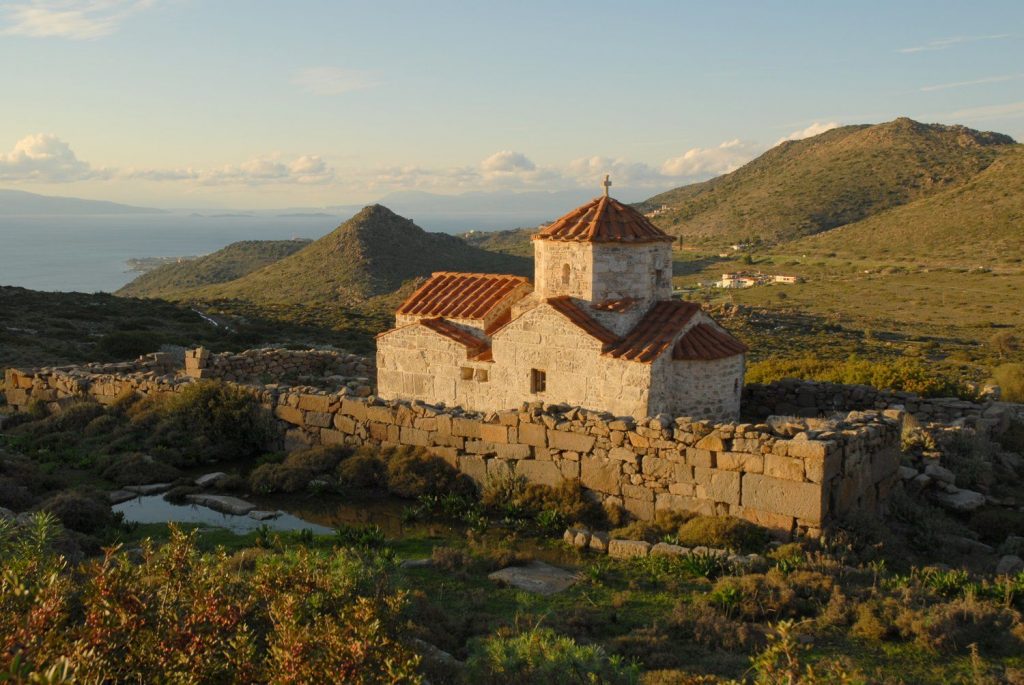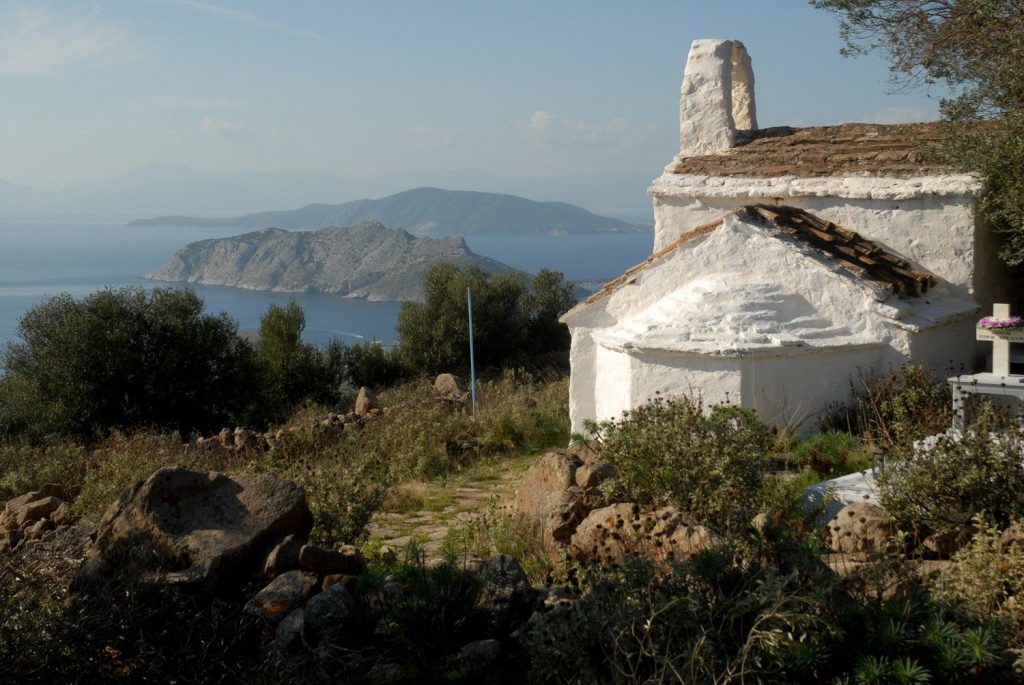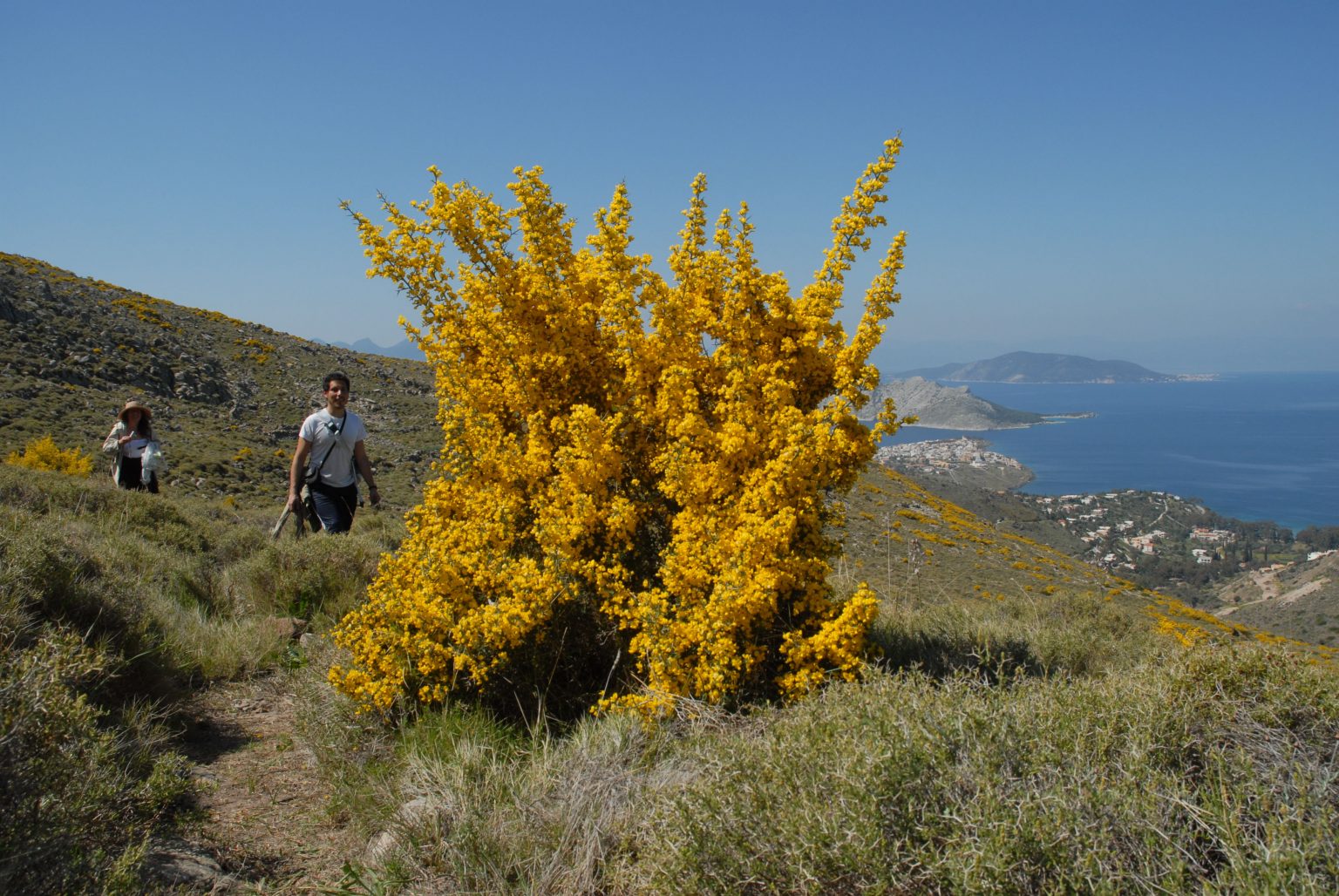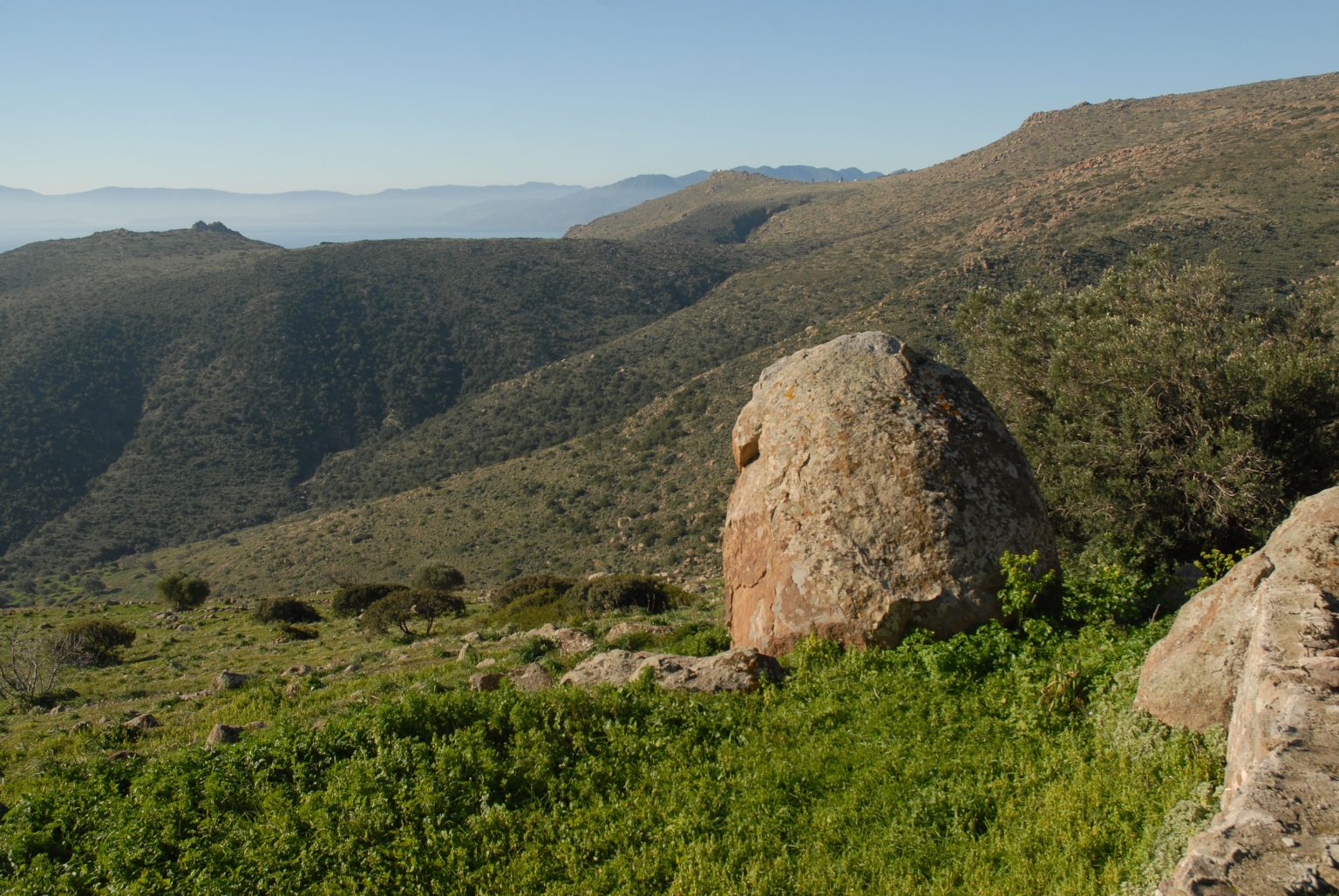 ANITSEOU – VLACHIDES – SFENTOURI – ACHLADA – ANALIPSI (PROFITIS ILIAS) – TAXIARCHES – ANITSEOU
ANITSEOU – VLACHIDES – SFENTOURI – ACHLADA – ANALIPSI (PROFITIS ILIAS) – TAXIARCHES – ANITSEOU
8.8 km / 5 hours (circular route)
Degree of difficulty: moderate (difficult for a short time after Achlada)
Starting point: Anitsaio (in front of the village church)
The route, passing through old agricultural and pastoral settlements and uninhabited areas on southern Aegina with magnificent views over the Peloponnese, takes us to the archaeological site of mount Hellanion. The starting point is the cement road in front of the church dedicated to the Dormition of the Virgin in the village Anitseou, with a towering old windmill. After about 300m, the route continues on the old path. After passing through the village of Vlachides, it continues to Sfentouri, passing by two “souvales” (traditional, stone-built water cisterns) on the way there. After Sfentouri, it goes by a large threshing floor not far from traditional churches and then by the large “souvala” Achlada. Here, the route is uphill and leads to a dirt road, where the trail to the top begins. There follows the downhill path to Taxiarches – Hellenistic ruins, and finally the return to Anitseou.
Photos 1-7: HPLocated on the top of Mount Hellanion, the tallest mountain in the Saronic Gulf (532m), the temple of Zeus Hellanios was erected by the mythical hero Aeacus, according to the legend. In modern times, the Profitis Ilias – Analipsi church was built on the same location. Zeus Hellanios (that is, Zeus of the Hellenes) is the same god of the weather who is worshiped under various adjectives on mountain tops. Pausanias calls the mountain “Panhellenic”.
Pilgrims from all over Greece flocked to the area, which experienced significant growth during the period of sovereignty by Pergamon in Asia Minor . Currently it is listed as an archaeological site and a landscape of outstanding natural beauty. Today, the church of the Taxiarchs (13th c.) can be found at the foot of the mountain to the north. On the side of the impressive stepped road leading to the chapel is preserved a 5m-high Hellenistic retaining wall built of polygonal masonry. By the church lie the ruins of a 20m-wide and 29m-long building, whose roof was supported by three rows of five columns. This building may have served as a guest house during local holiday celebrations. Further up, there is a large outdoor traditional water cistern (Souvala). An urn with a dedicatory inscription to Zeus Hellanios was discovered in a second traditional water cistern further up.

